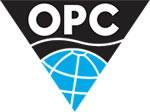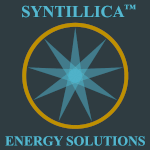
AIM-listed Block Energy, the production and development company focused on Georgia, has announced good progress on Phase 2 of its CCS project, with the key process specific subsurface uncertainties, ahead of the pilot test, having been resolved. Work has shifted to the redesign of existing non-producing wells, and implementation of the pilot injection of CO2 into the reservoir.
Work has been ongoing since November 2024 on Phase 2 of the CCS project. Phase 2 comprises of desktop, laboratory and field work, aimed at undertaking a pilot injection into the Patardzueli Middle Eocene reservoir, to prove mineralisation and permanent storage of CO2, and therefore the feasibility of an industrial level sequestration project. The Company has sufficient cash resources to fund the pilot programme in collaboration with Indorama, a major international petro-chemical company, who are Block's partners on this Project.
Highlights
- Results from the analysis of Middle Eocene reservoir rock samples exceeded expectations. They suggest the reservoir is suitable for CO2 mineralisation at depths shallower than forecast, reducing expected costs.
- A successful water injection test showed that well PAT-92 (an abandoned former production well) and well PAT-49 (currently used for water disposal) are in pressure communication and therefore can be used as injector and monitoring wells (critical for the monitoring and verification plan) for the pilot test.
- Work is ongoing to finalise the surface facility design at the PAT-49 well site as well as the monitoring and verification plan to commence injection of CO2 into the reservoir in mid-2025.
Commenting, Paul Haywood, Chief Executive Officer said:
'We continue to make good progress with our CCS project, with the main subsurface uncertainties now resolved. This was achieved through operational and laboratory work. The original analysis undertaken in Q4 2023 with respect to the project's storage potential, has been validated.
"We're excited for the next stage in the project, being the injection of CO2 into the reservoir, which will occur later this year once the surface facility modifications have been completed by our engineering team and once we conclude on the methodology to be used to verify the mineralisation of CO2. With the project broadly on schedule and within budget, I look forward to updating shareholders in due course.'
Phase 2 Work to Date
The original study by OPC, which examined the potential for the Middle Eocene to store carbon dioxide through mineralisation, was relied upon, along with logs and analogue outcrop data, to predict the presence of Zeolites (reactive minerals) within the Middle Eocene. As part of Phase 2, samples of Middle Eocene rock from two wells were analysed by Stratum Reservoir, to further define the project and prepare for injection of carbon dioxide. The results were above expectation, with rock samples proving the reservoir suitable for CO2 mineralisation at shallower depths than originally forecast, with the distribution of Zeolite concentrations relatively consistent throughout the reservoir.
The initial log and analogue based estimates of Zeolite concentrations had suggested that only deeper sections of the reservoir had significant concentrations of Zeolites. The laboratory rock sampling studies confirmed the initial estimates, with a mid-case 151.5 Mt CO2 storage potential, as previously announced.
The field monitoring and verification that CO2 is mineralised and permanently stored in the reservoir is a key milestone for defining a commercialisation route. As such, Block Energy has now conducted a successful water injection test on PAT-49 (the well selected for the pilot injection of CO2) and seen a strong pressure response in PAT-92 (the well selected to monitor the CO2 mineralisation process). The operation also demonstrated that water injection rates of over 5,000 barrels per day are achievable, a positive result for potential development scale storage.
The water injection test on PAT-49 and the preparation of PAT-92 were conducted by Block's in-house drilling and engineering team, using the Company's own A-80 rig. The Company has identified a number of other abandoned legacy wells that could be suitable for reinjection or monitoring in the future.
Finally, a corrosion study with respect to PAT-49 has been completed with the results determining that the well is suitable for pilot injection without any downhole modifications.
Phase 2 Further Work
With the key process specific subsurface uncertainties for the pilot test resolved, work has shifted to the design and implementation of the injection of carbon dioxide into the reservoir. CO2 will be mixed with water and pumped into PAT-49 to commence mineralisation. PAT-92 will act as a monitoring/surveillance well.
The monitoring and verification plan for the pilot (to ensure that the carbon dioxide is sequestered as planned into solid calcium carbonate) is currently being designed. Once this is done, then injection will begin. CO2 will be supplied by Indorama, a major international petro-chemical company, who are Block's partners on this Project.
Source: Block Energy











